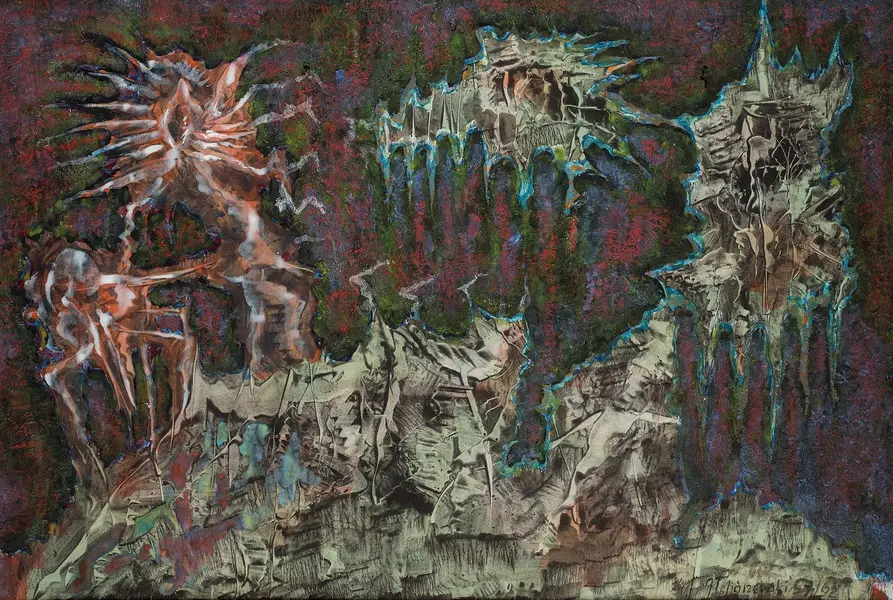


He graduated from the Faculty of Painting of the Academy of Fine Arts in Warsaw in 1968, when the previous generation of Polish artists was still fascinated by the "new figuration". Dobkowski's work is completely different. He departs from several layers of texture, preferred at that time, and proposes new, contrastive color combinations. He draws inspiration from the American pop-art, hippie subculture and the beauty of flora. His style, whose integral elements are linearity, nature, and eroticism, was already innovative at that time, and over the following decades it acquired exceptionally original features, which later became characteristic for the artist.
Line in Jan Dobkowski's work is a meaningful element, referring to the figure of a human being. It is precise and decorative, almost Art Nouveau-like, arranged in various, sensual shapes with erotic connotations. It is arranged in various, sensual shapes that carry erotic connotations. Ornamental form and contour are more important than color, unlike the Colorists' pieces with their emphasized form and the use of various shades. Dobkowski rejected their assumptions, using mostly basic colors (red and green) with uniform tonality. The fluid line highlights the natural flow of energy between forms with a recognizable shape and those that do not lend themselves to obvious interpretation by the viewer.
From the beginning, "Dobson's" (Dobkowski's artistic pseudonym) art has been characterized by a profound symbolism, grounded in the idea of panbiologism - a kind of fluidity between humans and plants. "Florality of bodies" and "carnality of plants" are visible in many of the artist's works, affirming the vitality of nature and its inseparable connotations with "naked" humanity. Dobkowski confidently crossed the line of shame regarding the tabooization of sexuality, in keeping with the "summer of love" of the hippie counterculture that was personally close to him. With his poster-like aesthetics (such as the "Summer Extension" series), he emphasized biological corporeality, the intimate dimension of the relationship between human and non-human identification of transformation.
"Pamukale" is one of the artist's more recent series, inspired by the breathtaking landscapes of the Turkish region (Pamukkale) where Dobkowski resided. Linearism is also consistently implemented by him in this series, where a blue line dominates, making up the individual elements of the landscape. The sky, water and light become subtle blue spots, a finely and abstractly depicted reality that the artist could delight in, never ceasing for a moment to contemplate the natural elements of the world around him. The coherence and originality of vision in Dobkowski's artistic output is extraordinary. It proves not only the artist's outstanding technique but also the personal dimension that art and the creative process have for him.